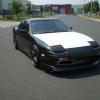6x9 speaker boxes
Announcements
-
Similar Content
-
Latest Posts
-
There is no difference between a 17x8 and an 18x8. The total diameter of the tyre needs to remain +/- the same (so you don't mess up the gearing, speedo reading, and clearance when turning front wheels..... so you just need to use a lower profile tyre on th 18 than you do on the 17. /rocket surgery.
-
I thought the same to start with. But then I thought it was one of those LCAs where the end of the ARB goes through a bushing in the LCA itself, instead of having an end link.
-
Yeah - I mean, go the other way. Smaller range. Not larger.
-
To re-cap, I bought: https://www.alibaba.com/product-detail/Lsailt-8G-Infiniti-Q50-Q60-2014_1601171829627.html?spm=a2756.trade-list-buyer.0.0.2cd476e9FTIlKE As you can see, if I bought 20 it was $653, but I bought 1 so it was $1,170. I was very tempted to buy 2 and resell 1 at 25% cheaper. @MBS206, I am not sure if they do a Kluger one, here is their list but it might be there under a global model name: http://www.lsailt.com/product/android-interface?page=1 Keep in mind these full android replacements have basically all the bits a phone does (cpu, ram, storage, wifi, bluetooth, usb interfaces) other than a screen (it uses a host), thus the $800+ cost. Android Auto screen mirroring is MUCH cheaper as it's just a cut down shell, input mirroring and output mirroring BTW I also need that "screen off" feature, it is much harder to see wildlife even if a dash is reasonably dark. Both the Fuga and V37 have display off buttons for night use, they just come back on for a second or 3 if you interact with it, eg skip a song.
-
I use FCC car launcher. It has an option for different backgrounds, so instead of turning the screen off you can swipe 'up' to a black screen with no background/icons. (mine has the time on it only). It's kinda nice. Also lets you use gestures to say swipe to go to next song, etc.
-






Recommended Posts
Create an account or sign in to comment
You need to be a member in order to leave a comment
Create an account
Sign up for a new account in our community. It's easy!
Register a new accountSign in
Already have an account? Sign in here.
Sign In Now